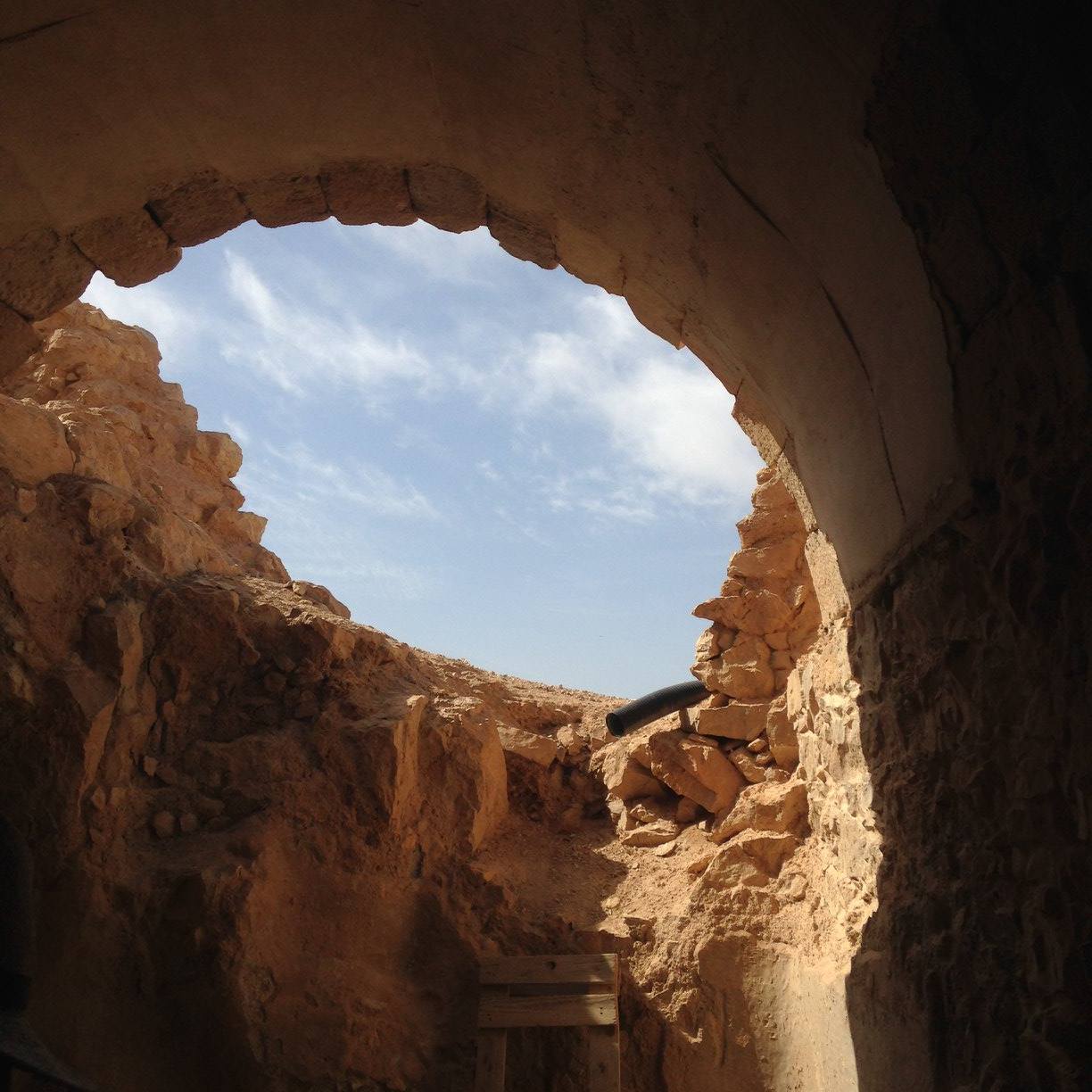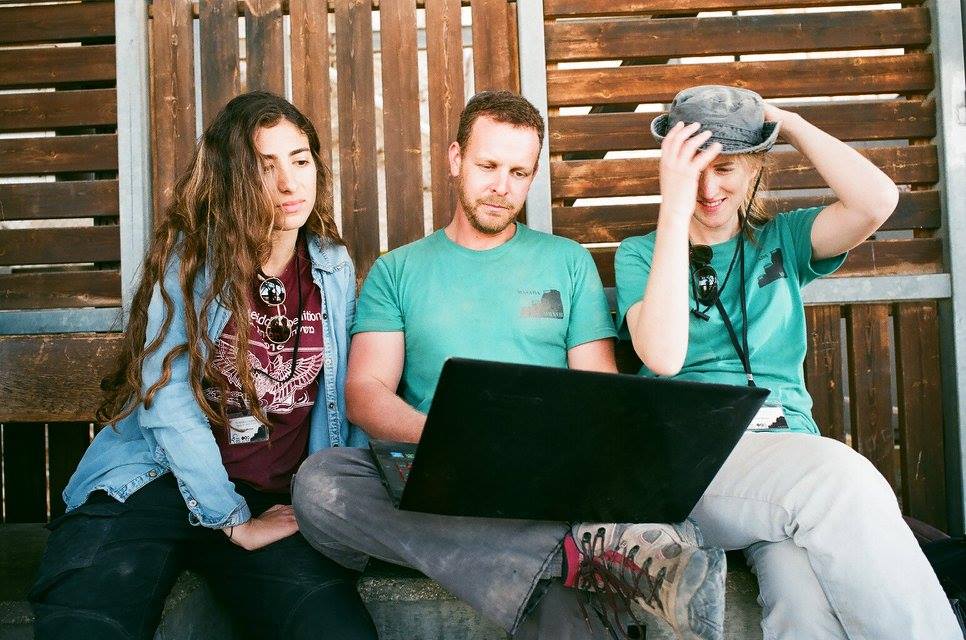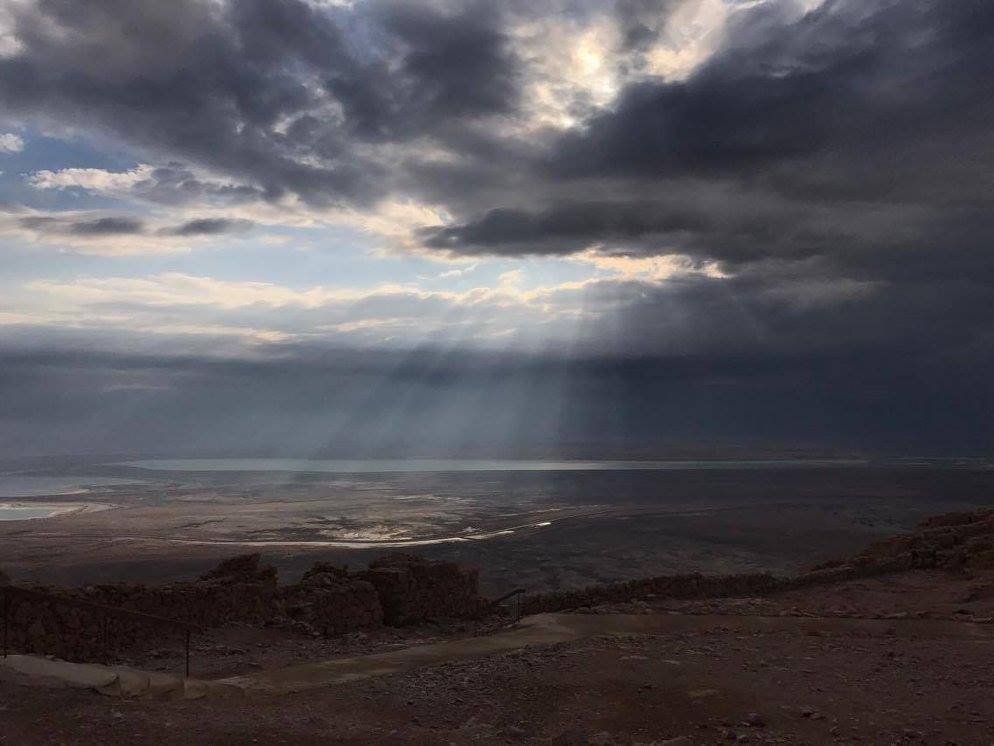Masada. "The strongest of them all". / Joshua Errington
A month excavating the remnants of Romans, Rebels, Monks and a Monarch

Photo credit: Omer Ze’evi
Atop the forbidding, isolated rock plateau of Masada, students of the program, took to the dry desert dust with trowels in hand. Each student worked the tools of the modern archaeological excavation, from trowels and turreahs, to total stations, and carried with them a knowledge of the intricate history of the site, having spent a semester in the classroom led in study by dig director, Dr. Guy Stiebel.

Photo credit: Hai Ashkenazi
Overlooking the western shore of the Dead Sea on the eastern edge of the Judean Desert, Masada once provided the backdrop for the rise of one of the greatest kings the land ever possessed, the final stand of a thousand Jewish rebels against Rome, and later the quiet place of meditation for Byzantine Christians. Likely a fortress from Hellenistic (Hasmonean) times, Herod the Great, of New Testament fame, fled there with his family and 800 supporters, before departing for Rome in a quest for kingship and legitimacy. He eventually returned and furnished the plateau with luxurious palaces, bathhouses, well-stocked storerooms, cisterns, a swimming pool and mighty casemate fortification walls that encircled the entire mountain.

Photo credit: Hai Ashkenazi
Some 70 years following the death of Herod, with the outbreak of First Jewish Revolt Masada was captured by a band of “sicarii” under the command of Menahem son of Judah. Soon, as the war progressed, the site became a place of refuge for other Jewish populations, including Essenes and Samaritans. Come 73/74 CE however, Masada attracted the attention of Rome and the Roman Governor Flavius Silva took siege of the site. Within a few months, the Romans breached the wall and set a-part of the site ablaze. Rather than die at the hand of Rome however, at least according to ancient historian Flavius Josephus, the remaining 960 rebels took their own lives; men, women and children. Finally, several centuries later, a small population of Byzantine monks established a monastery amongst the ruins of rebels and Romans alike.
This scene of dramatic history quickly transformed into the ultimate symbol for defiant resistance and choosing death over a life of slavery for post-war Jews and the modern State of Israel. Herod’s impressive palace-complexes stood for all the beauty, power and might that a strong Israel might strive for; the refugee camps of the Jewish rebels, within Herod’s mighty ruins, for a strenuous survival against all odds in what can be truly foreboding circumstances; and finally the camps and evidence of siege and war of Rome for the enemy who may complete encompass on all sides. For the Tel Aviv students of archaeology, however, the site provides something completely different; the chance to individually examine ancient historical sources, the archaeological (material) remains of those who lived there, and significant, albeit periodic, textual finds, to carefully contrast how each of these resources inform us of the past and relate to one another.
In February 2017, the first season of renewed excavation at Masada, on behalf of Tel Aviv University and headed by Dr. Guy Stiebel, three key areas were opened (described north-to-south).
Area B
Under the supervision of Boaz Gross and our International Program’s very own Alexandra Wrathall, Area B is located amidst what was once believed to be an open space devoid of structures. With early aerial photos at hand, however, our students demonstrated the presence of a large, centrally located rock-cut water cistern, capped by monumental boulders. The dating of the structures continues to be investigated but, located adjacent to the Byzantine chapel, it seems the primary water source for the Byzantine Period Christian population has finally been discovered. Students who worked this area are worthy of great acclamation as they worked tirelessly to remove layer-upon-layer of monumental boulders for four weeks straight!

Photo credit: Alexandra Wrathall
Area A
Supervised by Ayala Zilberstein and aided by Yuval Hai, Area A, located in a previously unexcavated triangular-shaped area between Herod’s so-called Western Palace and the casemate fortification walls, bore the remnants of the First Jewish Revolt era refugee camp. If Area B tried the stamina of our students, Area A tested the minute attention-to-detail of all who worked there. The architecture was fragmentary at best, and working to preserving layering of fragmentary packed floors can be difficult for even the most experienced archaeologists. Our students performed incredibly however and the season yielded incredible finds that only such dry desert sands can preserve.
Area D
Supervised by Naama Walzer and aided by Yana Kiriov, Area D was located in the remnants of a collapsed cave, immediately adjacent to the so-called Bet Ha’Midrash (“House of the Study”), a structure that was excavated in the 1960s and recently been suggested by Guy Stiebel to be identified as a Qumran-type scriptorium. Unexcavated, with possible parallels to Qumran and the site of the Dead Sea Scrolls, this area piqued the interest of our students like no other, and a special breed of our students worked through collapsed roofing material and millennia of debris hoping day-by-day to locate an ever-elusive floor. The end of the season revealed a carved stone face and several beautiful, carved architectural fragments. Here our students must be credited with working carefully and diligently in a hazardous environment, and from never shying away from a good story!
The majority of Masada’s architecture was uncovered in monumental-scale excavations during 1963-65 under the iconic Yigael Yadin. This raises the question of why you would return to such a heavily excavated site of which so much is known. There are vast differences in the tools at hand to the archaeologist of 1965 and that of 2017 however, and these renewed excavations offer the opportunity of excavating on a far smaller scale, carefully assessing the conclusions of the earlier expedition, and to focus more on the micro level. This difference is illustrated in the work within two other excavation areas opened during the season.
Area F
In the midst of the Northern Palace, in a true tourist hot-spot, a small section of the northern palace wall, never previously exposed, was excavated to enable sampling of wall plaster. Within this plaster are potential floral remains and evidence of anciently cultivated plantings trapped within. Under the careful guidance of true expert of the field, Dr. Dafna Langgut, and her team, our students learned how to carefully work at the finer techniques of modern archaeology.
Area E
At Masada’s far south, Area E lay within a large open area, generally thought to have been permanently barren. A series of cores and small probes in this area aimed to identify different soil types present atop the site and for potential evidence of agricultural activity.


Photo credit: Hai Ashkenazi
Beyond the 2017 season
With a whole year of work ahead of us processing and preparing the publication of the considerable finds of our initial season, our students can begin to look forward to working at Masada again in 2018. The iconic Masada still bares countless secrets waiting to be revealed. There is more work to do on top, new excavations planned within the Roman camps, and countless debates to be had. For instance, ‘what is the reality of the mass suicide described by Josephus,’ and ‘where were the toilets of Herod’s palace located’ – more of a fun mystery, but strangely elusive given his bath complexes are so well studied. The Tel Aviv International Program of Archaeology and History of the Land of the Bible is the driving force behind this truly unique excavation.
Continue to follow us to hear more of the amazing work of our students!

Photo credit: Hannah Morgan

